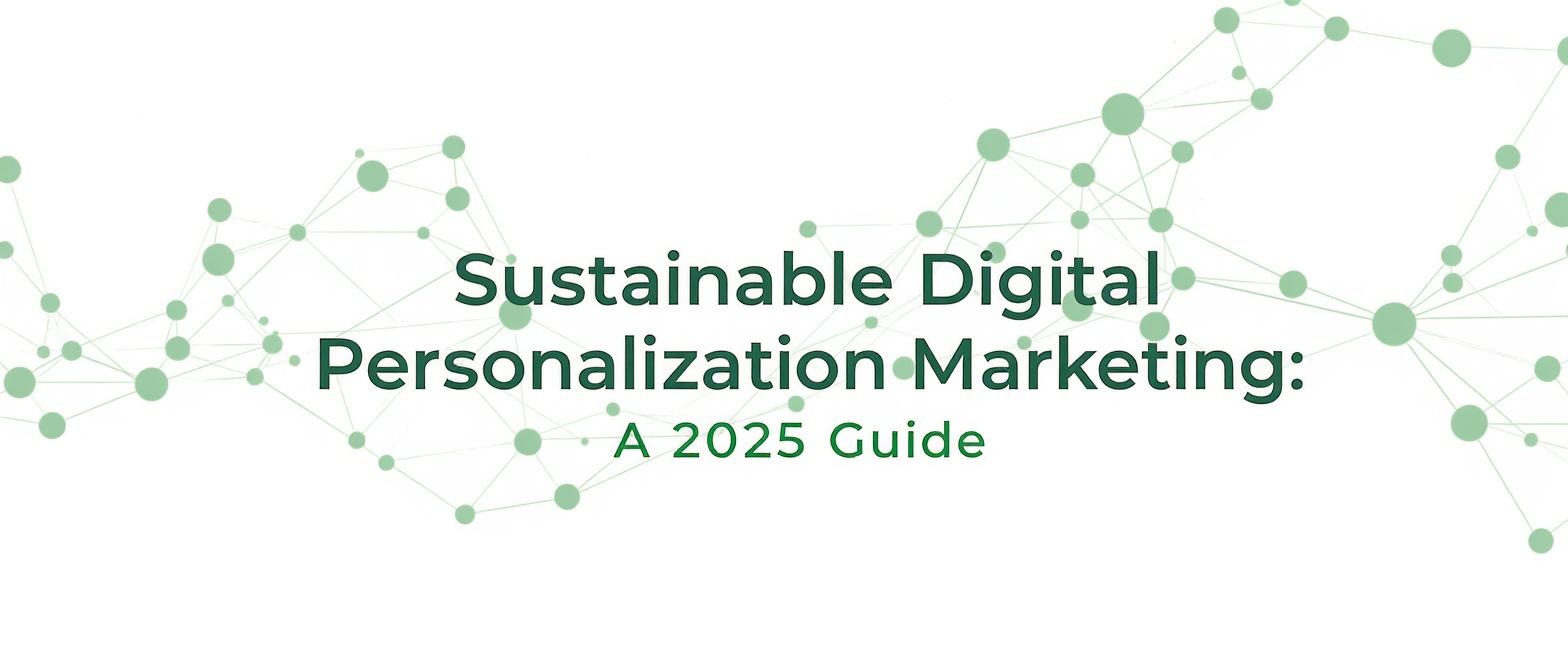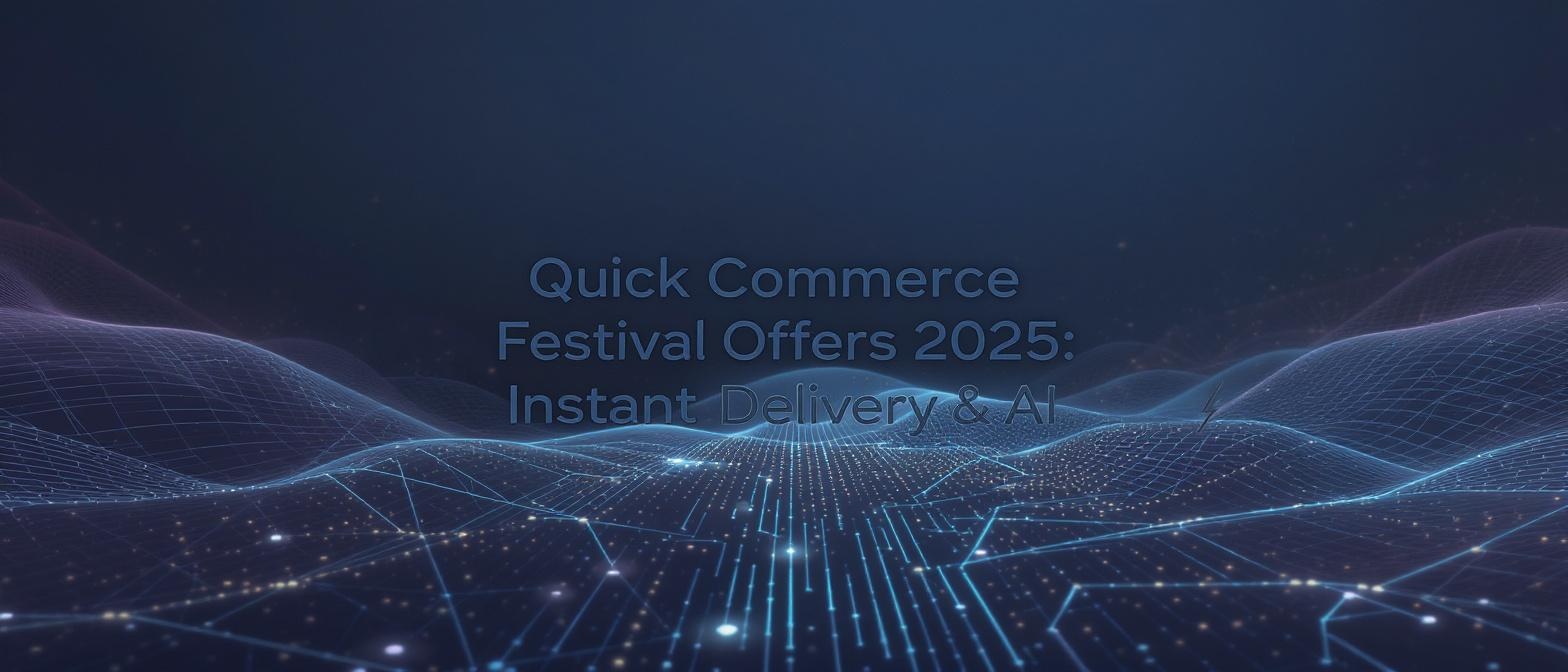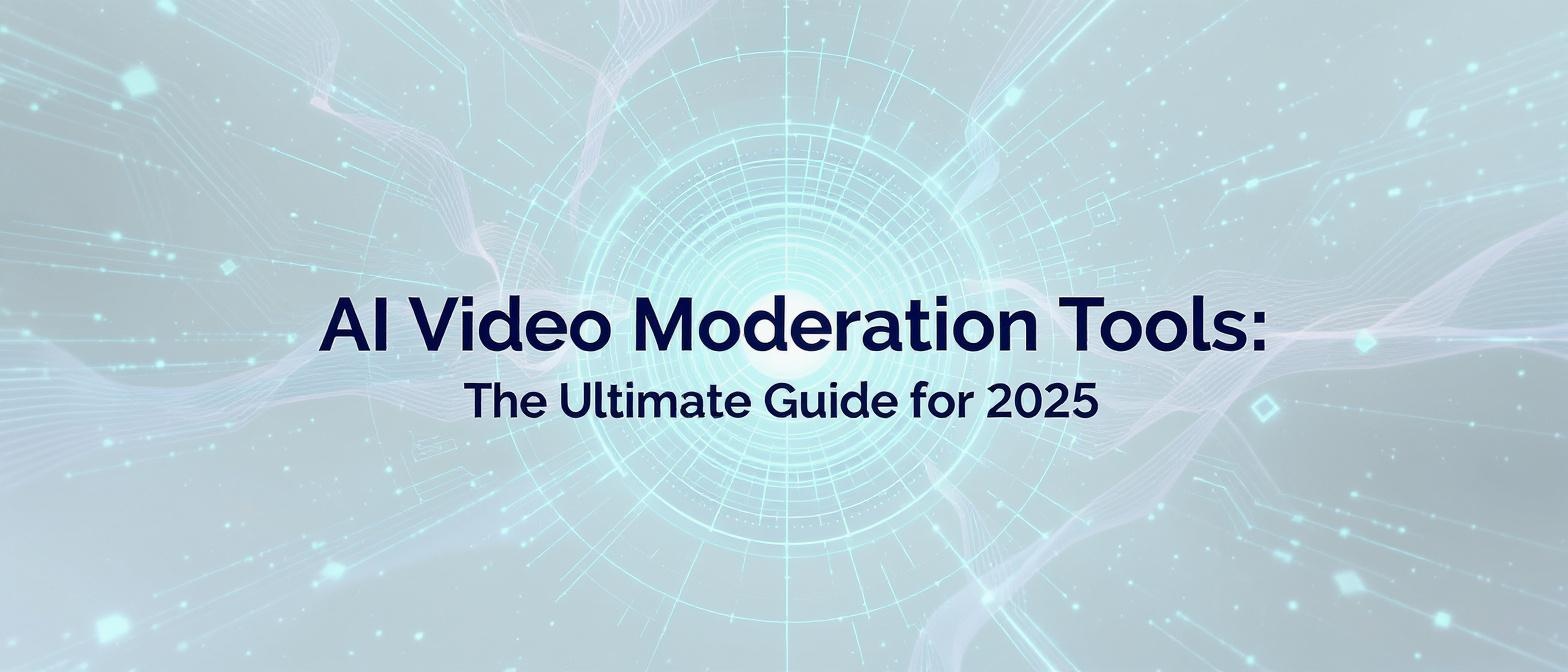Sustainable Digital Personalization Marketing: How CSR Leaders Can Drive Eco-Friendly Campaigns
Estimated reading time: about 13 minutes
Key Takeaways
- Sustainable digital personalization marketing merges environmental responsibility with highly targeted customer engagement.
- Paperless strategies and carbon footprint optimization are central to successful eco-friendly campaigns.
- AI-driven personalization reduces wasted impressions by delivering content only to relevant audiences.
- Authentic CSR communication requires data-driven segmentation and verifiable metrics to avoid greenwashing.
- Innovative technologies can align profit and planet, positioning brands as leaders in sustainability.
A deep dive into green marketing innovation, digital-first sustainability campaigns, and sustainable marketing strategies for 2025 and beyond.
1. Introduction: The New Frontier of Corporate Responsibility
In an era of conscious consumerism, the intersection of technology and ethics is redefining brand leadership. We are entering the age of sustainable digital personalization marketing, a discipline that delivers highly tailored digital experiences while actively minimizing environmental impact. This is achieved through paperless methods, hyper-efficient data usage, and low-carbon operational processes.
The market demand is unequivocal. A staggering 81% of consumers expect brands to be active partners in environmental improvement. For Corporate Social Responsibility (CSR) and Sustainability Leaders, this is no longer a peripheral concern but a core strategic mandate. Adopting sustainable digital personalization marketing is critical for building trust, shrinking your organization’s ecological footprint, and, counterintuitively, boosting marketing ROI. By aligning personalized sustainability messaging with innovative CSR communication strategies, you can create campaigns that resonate deeply with stakeholders and reflect genuine corporate values.
Source: https://www.truefan.ai/blogs/enterprise-video-personalization-strategy
This is not about choosing between personalization and sustainability; it’s about leveraging one to amplify the other. As we will explore, data-driven personalization, when executed correctly, is inherently more sustainable than mass-market broadcasting because it eliminates waste—wasted impressions, wasted energy, and wasted resources.
Source: https://awebdigital.co/sustainable-digital-marketing-strategies-boost-your-brand-2025/, https://www.lytics.com/blog/how-consumer-data-personalization-support-sustainability-efforts/
2. Understanding the Nuances of Sustainable Marketing Strategies
Sustainable marketing strategies represent a holistic framework that aligns every facet of your marketing—from brand messaging and channel selection to media buys—with unwavering environmental responsibility. It’s a paradigm shift from merely promoting “green” products to ensuring the very process of marketing is sustainable.
While digital channels inherently reduce the material waste of print, television, or out-of-home advertising, they are not without an environmental cost. Every email sent, every ad served, and every gigabyte of data stored consumes energy, contributing to a significant, often overlooked, digital carbon footprint. As of 2025, with the global sustainable products market forecasted to reach over $382 billion, the methods used to market these products are under increasing scrutiny.
To truly embrace sustainability, leaders must adopt these best practices:
- Audit Digital Channels for Carbon Intensity: Analyze the energy consumption of your current marketing mix. Video streaming, for instance, has a higher carbon footprint per minute than email. Understanding this allows you to make informed decisions and optimize your channel strategy for environmental impact reduction.
Source: https://www.truefan.ai/blogs/video-personalization-api-guide
- Opt for Green Infrastructure: Partner with data centers and cloud providers that are powered by renewable energy. Furthermore, implementing efficient coding practices for your website and digital assets—such as compressing images and minifying code—can significantly reduce server load and energy use.
- Prioritize Evergreen Content: Shift focus from high-volume, ephemeral advertising to creating long-lived, valuable content. High-quality articles, in-depth guides, and reusable video assets lower the need for constant, energy-intensive campaign churn. This approach builds authority while reducing your digital waste.
These principles form the foundation of impactful digital-first sustainability campaigns, moving beyond performative gestures to create tangible change.
Source: https://awebdigital.co/sustainable-digital-marketing-strategies-boost-your-brand-2025/
3. Building Digital-First Sustainability Campaigns That Inspire Action
Digital-first sustainability campaigns are initiatives conceived from the ground up for online distribution. They are meticulously optimized for low energy consumption and designed to champion powerful ecological messages with precision and authenticity.
Leading global brands are already pioneering this approach. Unilever’s #CleanFuture initiative features an interactive video series with assets optimized for minimal load times, reducing data transfer and energy use. Patagonia has mastered geo-targeted social media advertising, adjusting campaign content based on local climate events, ensuring relevance while avoiding wasteful, non-targeted impressions. This isn’t just smart marketing; it’s responsible communication.
The technical linchpin of these campaigns is AI-driven audience segmentation. Instead of broadcasting a message to millions, AI algorithms identify and serve content exclusively to the most relevant viewers. This dramatically reduces wasted impressions and the associated energy consumption, directly contributing to reducing your marketing carbon footprint. Platforms like TrueFan AI enable this level of precision, ensuring that resource-intensive content like video is delivered only where it will have the most impact. A 2025 report by Forbes highlights that a key CSR trend is embedding sustainability into core operations, and this targeted approach is a prime example of that principle in action.
Source: https://www.truefan.ai/blogs/video-personalization-roi-metrics
By leveraging AI, paperless marketing campaigns become not just possible, but more effective, proving that sustainability and performance are mutually reinforcing goals.
Source: https://www.lytics.com/blog/how-consumer-data-personalization-support-sustainability-efforts/, https://www.forbes.com/sites/timothyjmcclimon/2025/01/04/5-corporate-social-responsibility-csr-trends-to-watch-in-2025/
4. Your Path to an Eco-Friendly Marketing Transformation
An eco-friendly marketing transformation involves a strategic migration from high-waste channels—such as print, broadcast, and non-targeted digital ads—to precision, paperless, and API-driven methodologies. It’s a fundamental overhaul of marketing operations with sustainability at its core.
Here is a step-by-step guide for CSR leaders to spearhead this change:
- Map Your Marketing Supply Chain: Begin by auditing all marketing collateral and activities. Quantify the paper, transportation, and printing emissions associated with brochures, direct mail, and physical event materials. This baseline data is crucial for measuring improvement.
- Digitize Physical Assets: Systematically replace printed brochures and flyers with interactive PDFs, dynamic microsites, and QR-code-driven experiences. This not only eliminates paper waste but also provides richer analytics on content engagement.
- Embrace Virtual Engagement: Shift the budget from large-scale, on-site conferences and trade shows to sophisticated virtual events and webinars. This drastically reduces the carbon footprint associated with travel, accommodation, and venue energy consumption.
- Integrate AI-Powered Personalization: The final and most impactful step is to use AI to eliminate redundant, mass communications. Instead of a “spray and pray” email blast, leverage AI to send hyper-relevant messages to segmented audiences, reducing server load and digital noise.
A powerful example of green marketing innovation in practice comes from advanced generative AI. With TrueFan AI’s 175+ language support and Personalised Celebrity Videos, a brand can execute a global campaign from a single 15-minute shoot. The technology facilitates “virtual reshoots,” allowing marketers to change taglines, offers, or greetings on demand via API without requiring the talent to return to a studio, saving immense travel and production-related emissions. This approach transforms personalized sustainability messaging from a concept into a scalable, eco-friendly reality.
5. Concrete Strategies for Reducing Your Marketing Carbon Footprint
The marketing carbon footprint is a comprehensive measure of the environmental impact of your promotional activities. It encompasses everything from the material production and delivery of physical assets to the energy consumed by data centers, ad-serving networks, and end-user devices.
Successfully reducing your marketing carbon footprint requires a multi-pronged strategy focused on efficiency and waste elimination. Here are three high-impact tactics:
- Execute Relentless Paperless Marketing Campaigns: The most direct way to reduce material waste is to transition completely from print to digital. Replace direct mail with personalized email or video links. Instead of printing event agendas, use a mobile app. Each piece of paper eliminated is a measurable win for environmental impact reduction.
- Optimize on the Server-Side: For your digital assets, efficiency is key. Minimize video bitrates without sacrificing acceptable quality, implement lazy-loading for images and content on your website so they only load when needed, and compress all web files. These technical tweaks reduce the data transferred and the energy consumed by both your servers and the end user’s device.
- Leverage Precision Ad Targeting: Utilize first-party customer data—such as purchase history, browsing behavior, and location—to ensure your digital ads are shown only to individuals for whom they are truly relevant. This avoids the massive energy waste associated with millions of irrelevant ad impressions. Research confirms that well-managed digital marketing can cut carbon emissions by up to 50% compared to traditional print campaigns.
By implementing these focused tactics, organizations can achieve a significant and verifiable environmental impact reduction from their marketing operations.
Source: https://www.truefan.ai/blogs/financial-services-video-personalization
Source: https://awebdigital.co/sustainable-digital-marketing-strategies-boost-your-brand-2025/
6. Harnessing Green Marketing Innovation for a Competitive Edge
Green marketing innovation refers to the application of novel technologies and creative strategies that simultaneously boost sustainability credentials and deepen customer personalization. It’s where cutting-edge tech serves a greater purpose, transforming marketing from a cost center into a force for good.
At the forefront of this movement are enterprise-grade generative AI solutions. Consider these capabilities:
- Hyper-Personalization at Scale: Imagine a brand ambassador addressing millions of individual customers by name, referencing their city, or acknowledging their recent purchase history in a seamless video message. By feeding CRM data directly into dynamic video templates, brands can create a unique, one-to-one connection with every single viewer.
- Automated Multilingual Localization: True digital-first sustainability campaigns must be globally inclusive. Modern AI can auto-translate and, crucially, lip-sync video content into over 175 languages from a single source file. This eliminates the need for dozens of separate, carbon-intensive shoots and manual dubbing sessions, making global campaigns both scalable and eco-friendly.
- Real-Time, API-Driven Delivery: The pinnacle of efficiency is automation. With API calls that generate and deliver a personalized video in under 30 seconds, brands can react to customer actions instantly. A video can be triggered by a cart abandonment, a loyalty milestone, or an inquiry, and delivered via email, SMS, WhatsApp, or an embedded microsite without human intervention.
Technologically, this is powered by secure, cloud-agnostic GPU farms and architected with enterprise-grade compliance (ISO 27001 & SOC2). Critically, the entire model is built on a consent-first foundation, ensuring that every celebrity or brand ambassador has formally approved the use of their likeness. This fusion of technology and ethics is the essence of modern personalized sustainability messaging.
7. Mastering Effective CSR Communication Strategies
In 2025, with over 95% of the world’s largest companies publishing sustainability targets, the challenge is no longer about having a CSR program, but about communicating it effectively. CSR communication strategies must evolve from generic, annual reports into targeted, transparent narratives that report environmental and social initiatives in a way that resonates with diverse stakeholders.
Authenticity is paramount. Here are best practices for communicating your sustainability efforts without falling into the trap of “greenwashing”:
- Use Data-Driven Segmentation for Relevance: Tailor your CSR messages based on audience concerns. Youth demographics may be highly engaged by your plastic reduction initiatives, while institutional investors are focused on your overall ESG scores and carbon accounting. Use your data to speak their language.
- Leverage Personalization for Impact: Make your CSR story personal. Instead of a generic announcement, use personalized video to mention a stakeholder’s specific region or their role in a CSR program. For example, a video to employees could thank them for their participation in a local clean-up drive, mentioning their city by name.
- Prioritize Transparency and Verifiability: Avoid vague claims. Back up your sustainability achievements with third-party metrics, certifications, and verifiable KPIs. Transparency builds trust, which is the ultimate goal of any CSR communication.
A powerful real-world example is Cipla’s Doctor’s Day campaign. The pharmaceutical leader used personalized video technology to have actress Vidya Balan thank thousands of doctors individually by name. This highly personal and scalable act of appreciation strengthened B2B relationships and generated massive organic PR, showcasing how personalized sustainability messaging can amplify environmental impact reduction efforts.
Source: https://greenplaces.com/articles/50-essential-sustainability-statistics-for-2025/
8. Driving and Measuring Environmental Impact Reduction at Scale
True environmental impact reduction in marketing is not an abstract goal; it is a set of measurable decreases in greenhouse gas (GHG) emissions, paper consumption, and data-center energy usage. To be credible, sustainability initiatives must be quantifiable.
Modern marketing platforms are now incorporating analytics dashboards designed specifically for this purpose. These tools can track not only traditional engagement metrics like view-through rates and conversion lift but also the carbon savings achieved per campaign. This is often calculated by comparing the footprint of a digital-first initiative against its print or physical equivalent.
The ROI of this approach is twofold: ecological and financial. Solutions like TrueFan AI demonstrate ROI through concrete performance lifts. For example:
- Goibibo, a leading travel portal, saw a 17% lift in read rates on WhatsApp messages that included a personalized video from cricketer Rishabh Pant compared to standard text-based offers.
- Zomato generated 354,000 unique, personalized Mother’s Day videos in a single day, creating a massive engagement wave without any of the physical gift card waste or logistics emissions of a traditional campaign.
Behind the scenes, this scale is managed through sophisticated technical architecture, including central API endpoints for new requests and status checks. A simple JSON payload can feed all the necessary personalization fields, making the integration of sustainable marketing strategies seamless for enterprise tech teams. This ability to connect tangible business results with verifiable environmental benefits is what makes green marketing innovation a strategic imperative.
9. Designing High-Impact, Paperless Marketing Campaigns
Paperless marketing campaigns are strategic initiatives that systematically replace all physical collateral with superior digital assets. This is not simply about ceasing to print; it’s about creating more engaging, measurable, and sustainable brand experiences.
Here are proven tactics for an effective eco-friendly marketing transformation:
- Deploy Interactive PDFs and Microsites: Instead of static brochures, create interactive PDFs with embedded video placeholders that can be updated with dynamic, personalized content. For larger campaigns, build dedicated microsites that offer a rich, immersive experience.
- Personalize Virtual Events: Elevate the virtual event experience by sending personalized welcome videos to each registered attendee. A simple video from a keynote speaker addressing the attendee by name can dramatically increase engagement and make the digital experience feel exclusive.
- Integrate QR Codes with OOH: Bridge the physical and digital worlds sustainably. Use QR-code-driven Out-of-Home (OOH) advertising that links users to a custom microsite or a personalized video message, eliminating the need for printed takeaways.
Hero MotoCorp’s festive greetings campaign provides a compelling case study. The automotive giant sent 2.4 million personalized videos to customers via SMS and email, resulting in record-breaking visits to their service camps—all without printing and mailing a single physical invitation. This campaign perfectly illustrates how paperless marketing campaigns not only aid in reducing your marketing carbon footprint but can also drive superior offline results.
Conclusion: The Dual Imperative of Profit and Planet
The era of choosing between what is good for business and what is good for the planet is over. The dual benefits of sustainable digital personalization marketing are clear: genuine, measurable ecological impact reduction and superior stakeholder engagement through deep personalization. The strategies are no longer theoretical; the technology is proven and scalable.
For CSR and Sustainability Leaders, the path forward is to champion this transformation. By adopting sustainable marketing strategies and pioneering innovative CSR communication strategies, you will position your organization at the forefront of both ethics and effectiveness. The leaders of tomorrow will be those who prove that the most responsible marketing is also the most resonant.
Your call to action is to pilot a paperless, AI-driven personalized video campaign. Set clear KPIs for both carbon savings and stakeholder engagement. The results will not only validate the approach but will also pave the way for a more sustainable and profitable future.
Frequently Asked Questions
1. What is the first step to making our company’s marketing more sustainable?
The first and most critical step is to conduct a comprehensive audit of your current marketing activities. Measure your existing carbon footprint, including print materials, travel for events, and digital energy consumption. This baseline will allow you to identify the biggest areas for improvement and set measurable goals for your eco-friendly marketing transformation.
2. Isn’t digital marketing already eco-friendly compared to print?
While digital marketing generally has a lower carbon footprint than traditional print, it is not emissions-free. The energy consumed by data centers, ad-serving networks, and user devices is significant. A truly sustainable strategy involves not just choosing digital over print, but optimizing your digital activities—like using green hosting, compressing files, and employing precise ad targeting to eliminate wasted energy.
3. How do you measure the ROI of sustainable marketing strategies?
The ROI is measured in two ways. First, by tracking “Green KPIs” such as reduction in paper usage (in tonnes), carbon emissions saved (in kg of CO2e), and decrease in energy consumption. Second, by tracking business KPIs like increased engagement rates, higher conversion lifts, and improved brand sentiment scores, which often result from more relevant, personalized, and value-aligned messaging.
4. Can small and medium-sized businesses (SMBs) adopt these strategies?
Absolutely. Many principles of sustainable digital marketing are highly accessible. SMBs can start by optimizing their websites for efficiency, choosing green web hosting providers, prioritizing email marketing over direct mail, and leveraging the built-in targeting features of social media platforms to reduce ad waste. The key is to start with a mindset of efficiency and waste reduction.
5. How can AI platforms like TrueFan AI help reduce our marketing carbon footprint?
AI platforms contribute significantly by maximizing efficiency and eliminating physical production needs. For example, by using generative AI to create millions of personalized videos from a single shoot, TrueFan AI eliminates the massive carbon footprint associated with travel, logistics, and studio time for multiple reshoots and localizations. This “create once, personalize infinitely” model is inherently more sustainable than traditional production workflows.
6. What is “greenwashing,” and how can my organization avoid it?
Greenwashing is the act of making misleading or unsubstantiated claims about the environmental benefits of a product, service, or company practice. To avoid it, ensure all your sustainability claims are specific, accurate, and backed by verifiable data or third-party certifications. Focus on transparently communicating your actual initiatives and progress rather than using vague, positive-sounding language.



